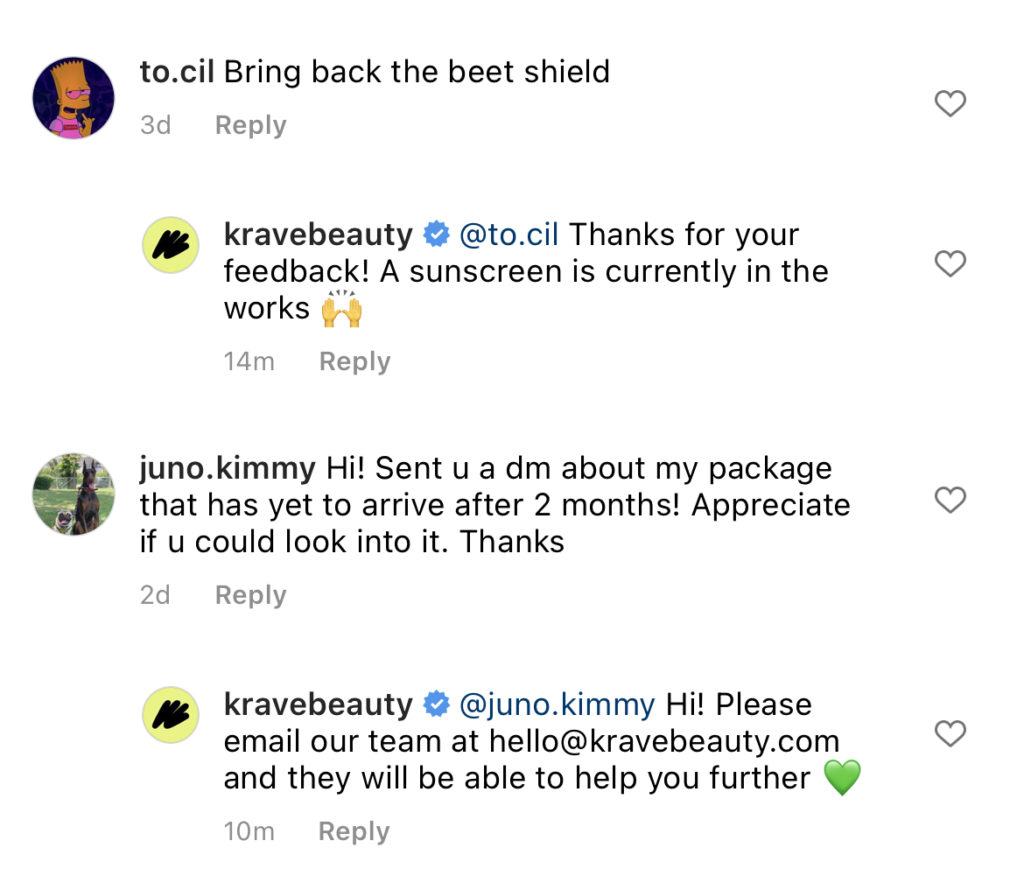Social media is a fascinating place; it has arguably changed the way society operates. Instead of digging into food when we’re hungry, we pause to let the camera eat first. Before news outlets can pick up stories, they become viral on social media. As injustices happen all over the world, from police brutality to the aftermath of war, they are filmed and uploaded for all to see.
Good and bad, social media has become a pillar of our lives and as businesses, we have to keep up with it all.
Negative comments are par for the course when it comes to social media, especially as a business. Everything from polarizing, political topics to whether a dress is black and blue or gold and white comes with an edge of nastiness.
As a small business owner, you have to respond professionally and on-brand to everything, but people don’t always make it easy. Here are our top tips for responding to negative comments on social media:
DO reply to comments as soon as possible
According to HubSpot, “79% of customers expect a response to their social media posts within 24 hours.” Positive or negative, you have to be on top of your community management to ensure that your followers and customers are not left hanging.
People want to feel heard. Acknowledge your customers by responding to every comment, even the negative ones.
DON’T copy-paste your response
Remember, social media is meant to humanize your brand. Although templates can be really helpful for your team to use as a guideline or stay on-brand, using copy-paste responses can be frustrating for customers.
When you use the same generic reply for every complaint and criticism you get, followers are going to notice. Instead, kill ‘em with kindness and try to make people feel special as much as possible – even when they’re complaining.
This means using their name, repeating phrases from their original comment to show that you’re paying attention, and offering up a solution when possible.
DO apologize sincerely when necessary
Sometimes, you miss the mark – and that’s okay. We all make mistakes. When critics leave negative reviews or feedback, start by apologizing, and letting them know that you are looking into their problem.
This assures the person complaining, as well as others who see the interaction, that your brand holds itself to a high standard and resolves any exceptions when that standard falters.
Beyond this, make sure you can walk the walk. Ensure that your team does not make the same mistake again and do your best to rid customers of the sour taste in their mouths when something does go wrong. You can do this by:
- Offering an exclusive discount
- Adding in a bonus product or special gift
- Giving them account credits or a one-time freebie of their choice
Our copywriting team also recommends flipping the script on your customers in a genuine way. For instance, if a customer points out an error or bad experience, show gratitude to them for helping improve your processes and tell them how you’ll fix it in the future.
Here are some script examples you can use as guidance:
- “Thanks for taking the time to point this out to us, [Name]! We appreciate you giving us the opportunity to fix our internal process so this never happens again. This is not representative of our typical standard of service, and we are having our Director of Customer Service look further into the problem. In the meantime, please email us at [email] so we can get you the right order as soon as possible.”
- “[Name], we sincerely apologize for the inconvenience of the delayed order. Since you no longer need this product, please email us at [email] so that we can process a complimentary refund to make up for the mishap. Thanks for your patience!”
- “Oh no! We are so sorry to hear that there was some miscommunication from our team. We prioritize a warm and welcome experience, and it seems we’ve missed the mark. Please DM us so that we can give you a free item of your choice to make it up to you!”
DON’T be afraid to use humor
Customers are always going to remember how you make them feel, and getting them to smile even when they’re upset will definitely score you points.
Using humor is a great way to make your brand more personal, which is perfect on social media. If it aligns with your brand personality, jump in and have fun with it. We see this quite often with food brands on Twitter. Duolingo has also gotten quite the buzz for its hilarious community engagement strategy on TikTok.
Here’s an example from Wendy’s Twitter:

Wendy’s signature voice on Twitter has become immensely popular and has been translated over to their other social media accounts. Now, they’re known for their incredibly witty “roasts,” where they go after people and brands by participating in National Roast Day.
DO take the conversation offline immediately
While transparency is key when things go wrong, you do not want an upset customer to ruin your reputation in a public setting. In other words, don’t make a scene.
When responding to comments, make sure to take your conversation offline as soon as possible. This usually looks like offering alternate methods of communication to resolve the issue: phone call, email, DMs, etc.
This way, you can give your customer white-glove service in resolving their issue, and you can avoid a PR disaster from unraveling in the comments.
Here are some examples of scripts you can use to move a conversation away from the comments:
- “Thanks for letting us know about XYZ, [Name]! We’ve DM’d you to continue the conversation.”
- “We are so sorry about this inconvenience. We’d like to look further into this for you and help resolve this issue. Please contact us [email] so that we can iron this out ASAP!”
- “Hi, [Name]! Thanks for taking the time to tell us about your experience. We apologize for not being able to meet your expectations. As the Restaurant Manager, I’d like to take care of this for you personally. If you could email me at [email], I’d love to chat more with you about your experience so our team can avoid this issue in the future.”
Here’s an example of Krave Beauty, a skincare brand, using these tips in action:

DON’T feel like you have to respond to everything
We say this cautiously. The truth is you should try to respond to almost everything, nastiness and all. However, prioritize your team members’ mental health and the reputation of your business by knowing when to draw the line.
Do not respond to comments that violate community guidelines or might offend other followers. This might include excessive profanity, spam, trolls, cultural/racial slurs bias, harassment, threats, etc.
In addition to encouraging additional hate, such comments could place a burden on your team, especially if it directly impacts or attacks their identities. If the comments are extremely offensive, you should exercise your right to delete and/or block the comment and the user.

Hire social media experts to handle your community management
At the end of the day, negative comments need to be handled gracefully to maintain your brand image. These guidelines will help you stay on top of your community management on social media without feeling too lost.
If you would rather not deal with the headache of responding timely to comments, get a team of social media experts to do it for you. Our Boston-based agency has decades of experience with content creation, community management, analytics, and more in a variety of industries. Learn more about our social media marketing services today.
